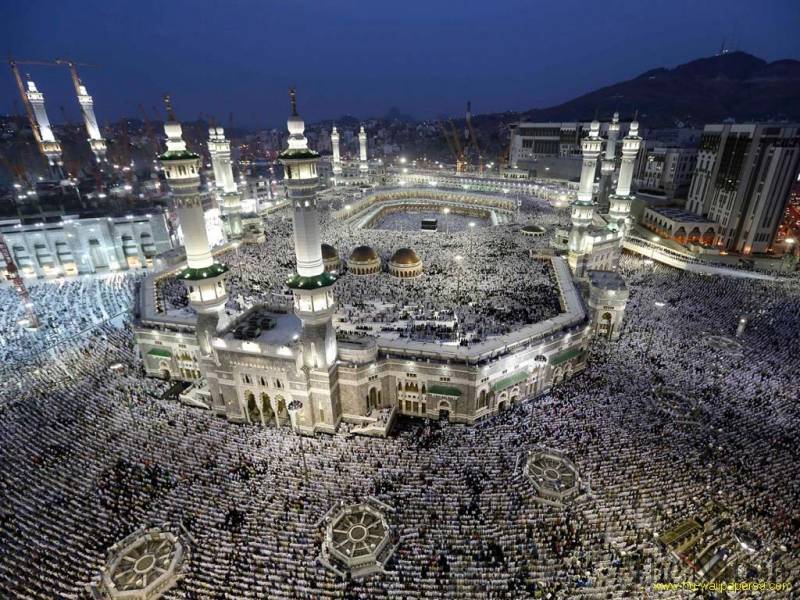Quoting history does not mean that the account is true. Neither does it dictate that it is not. History of course stays true, what we make it out to be is another thing. What follows is one such account.
Although beyond the 16th century, the holy lands of Mecca and Madina were under direct protection of the caliph in Bosphorus, they remained mostly neglected enabling the tribal dogmas and norms to prevail amidst mostly arid geographies. The trade hub that the area had long marvelled itself for was now used solely for the travel of pilgrims who, unlike the traders of the past, could not contribute enough to sustain the local economy. Money hence was scarce and the locals frustrated.
Muhammad Ibn Abdul Wahhab (1703-92) born in Uyayna, was the son of a local theologian who was a proponent of an ultra-orthodox eighth century interpretation of Muslim law. Following his father’s footsteps, Abdul Wahhab too insisted that the Islam practiced by his contemporaries ‘had deviated widely from the orthodox practice and theory prescribed by the Prophet and the Koran’ and there was a dire need for reformation. He insisted that only the ‘pure beliefs’ of the olden times could offer respite to the otherwise agitated and segmented Arabian populace who were now seen indulging in ritualistic protocols. The saints, Abdul Wahhab insisted, had deviated from the true essence of Islam and a return required a ruthless revival in the form of puritanism.
His views however, were not kept to his self alone. Even at a young age, tired of tending to date palms or overseeing the cattle graze in the oasis, Abdul Wahab taking advantage of his shared name with a theologian, started preaching his opinions. His word, given his kinship, held considerably more weightage compared to a layman’s. His listeners grew in number and these listeners soon became devoted followers. Ibn-Taymiyah insists that Abdul Wahab drew his inspirations from the likes of Ibn-Hanbal while others simply maintain his perseverance to the similarity of his message to that of his father’s.
Abdul Wahab advocated and in subsequent times, ensured social prescriptions. Amongst other things he strongly opposed the worship of Prophet Mohammad, condemned those who prayed in or became part of the saint-cum-shrine creed, criticized the marking of graves claiming the recognition was irrelevant, denounced all non-sunni sects as well as condemned the sunni Sultan-Caliph in Istanbul, emphasized a belief in Islamic punishments such as lashing, stoning to death, amputation of thieves and public execution of criminals.
Like the church before him, Abdul Wahab recognized that a significant momentum to his movement could only be achieved if the religious doctrine meshed into a political objective. The realization of this discovery came in the form of Muhammad ibn Saud who was the emir, and according to some accounts a notorious career bandit, of Deraiya, a petty oasis city-state in the province of Nejd.
What followed was in literal as well as metaphorical terms, a marriage of convenience. Ibn Saud too realized that Abdul Wahab’s religious influence and charisma could work towards his military advantage. As a gesture of furthering relations, the emir married one of Abdul Wahab’s daughters and integrated him into his political campaigns. The brutality in the teachings of the latter helped Ibn Saud nurture a sense of fear within his state. Ibn Wahab provided theological justifications to almost every injunction of Ibn Saud. A famous one is the former’s fatwa that justified the looting of Muslim cities and settlements and henceforth asserting the latter’s rule over neighbouring tribes.
The aforementioned union was to prove a turning point of the Saudi peninsulian population. Like the strength of the church and pope in the pre-crusades era, the combined strength of Wahab and Saud reformed the way the ruled live under them. More importantly they generated a philosophy that is seen to enchant many even today. The two set out to reform Islam and the Islamic empire and conducted a number of political campaigns. They sacked Karbala in 1801, captured Makkah in 1803, conquered Al-Madinah a year later and ‘purged these cities of all that savoured of idolatry’. In 1805 they invaded Syria and al-Iraq and extended their domain from Palmyra to Uman, the largest in the Peninsula since the Prophet Mohammad’s days.
The strength of the mesh of religion and politics has stood the test of time. What good have such unions done is another story; one too elaborate for this column. The model however has been used by many of history’s most famous leaders and will be used by many in days to come. Lessons will be learnt. Lessons will be forgotten.
Thursday, April 18, 2024
Strength of unison

The writer is a Dissertation Researcher based in Finland. He conducts research on political, regional and societal changes with special focus on religious minorities in Europe.
Courage vs Hypocrisy
April 18, 2024
Modi’s Pulwama-Like Operations
April 18, 2024
Justice denied
April 18, 2024
AI dilemmas unveiled
April 18, 2024
Tax tangle
April 18, 2024
Rail Revival
April 17, 2024
Addressing Climate Change
April 17, 2024
Saudi Investment
April 17, 2024
Political Reconciliation
April 16, 2024
Pricing Pressures
April 16, 2024
Workforce inequality
April 17, 2024
New partnerships
April 17, 2024
Shikarpur crisis
April 17, 2024
Peace quest
April 17, 2024
Democratic harmony
April 16, 2024
ePaper - Nawaiwaqt
Advertisement
Nawaiwaqt Group | Copyright © 2024





